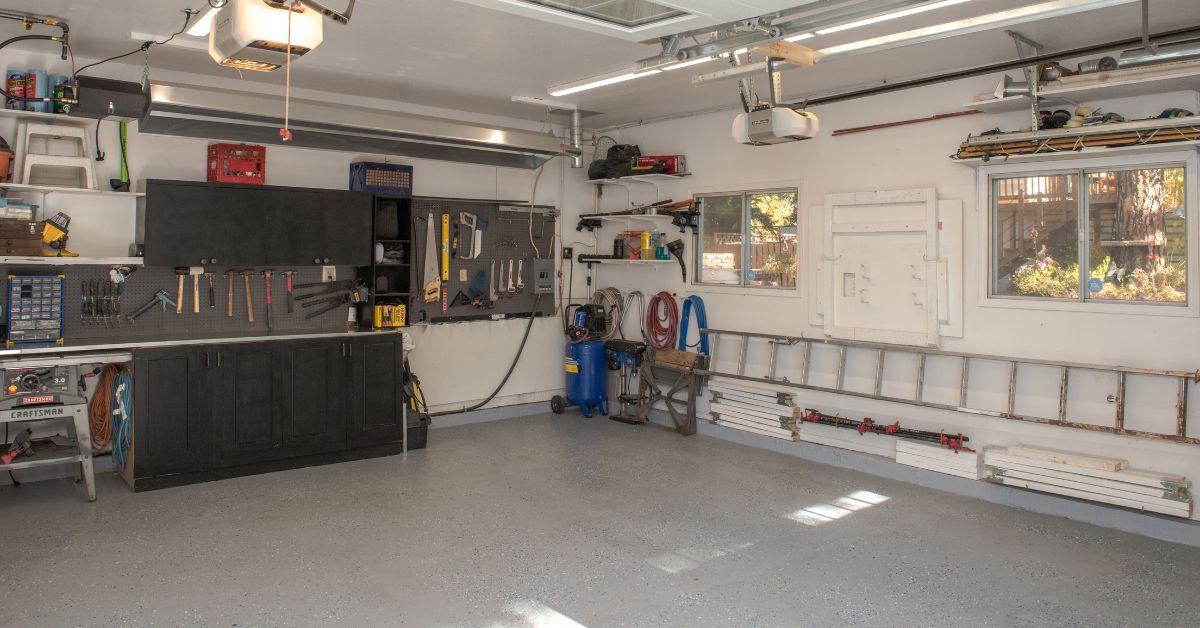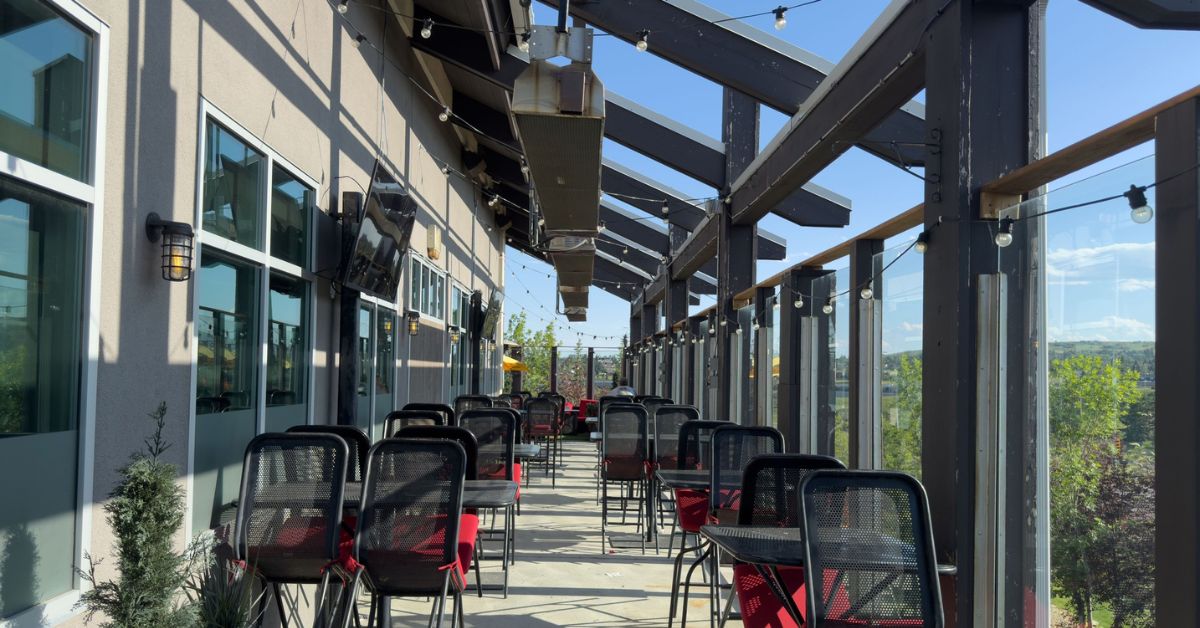Heavy snowfall, severe winds, and cold temperatures can affect working conditions in your industrial facility. Even with proper insulation, large warehouses with open floor plans will require additional resources to maintain a warm workplace. Learn how to heat warehouses and other industrial buildings effectively for a safe work environment.
Common Industrial Heating Challenges
Warehouses and industrial buildings typically feature high ceilings, expansive floor plans, and frequent door openings that allow heat to escape rapidly. Cold air naturally settles at the ground level where workers operate, while warm air rises to the ceiling where it provides little benefit to personnel or temperature-sensitive products.
Traditional heating methods often prove inadequate and inefficient for these environments. Forced-air systems struggle to distribute heat evenly across large spaces. Additionally, these systems consume excessive energy while failing to maintain consistent temperatures where workers need warmth most.
The Impact of Cold on Operations
Cold temperatures create uncomfortable and unsafe working conditions for operators. Low temperatures can damage sensitive products, reduce equipment efficiency, and compromise worker safety and productivity. Frozen pipes, condensation problems, and equipment malfunctions also frequently occur in inadequately heated facilities, leading to expensive repairs and operational disruptions.
Workers in cold environments experience reduced dexterity, slower reaction times, and increased fatigue. These conditions elevate the risk of workplace accidents and decrease overall productivity.
Why Mounted Infrared Heaters Excel in Industrial Settings
As a solution to these problems, mounted infrared heaters deliver targeted heat directly to people and objects rather than attempting to warm the entire air volume of a large space. This direct heating approach proves far more efficient and effective than conventional heating methods.
Infrared technology works by emitting radiant energy that travels through the air without heating it. When this energy reaches solid objects, including floors, equipment, and people, it converts to heat. This offers a warm environment for businesses during harsh winter months.
Immediate Heat Distribution
Unlike forced-air systems that require time to circulate warm air throughout the space, mounted infrared heaters provide instant heat upon activation. Workers feel the warming effects immediately, so they won’t have to wait for lengthy warm-up periods associated with traditional heating systems. This immediate response proves particularly valuable in facilities that operate intermittently or require quick temperature adjustments.
Energy Efficiency Advantages
Mounted infrared heaters operate with exceptional energy efficiency compared to conventional heating systems. These units convert nearly 100% of their energy input into usable heat, with minimal energy lost to heating unused air space. The targeted heating approach reduces energy consumption by focusing heat where workers actually need it rather than attempting to warm the entire building.
The radiant heat produced by infrared systems also reduces heat loss through air movement and ventilation systems. Traditional heated air easily escapes through doors, windows, and ventilation systems. Infrared heat, on the other hand, remains with the objects it warms, providing longer-lasting comfort with less energy consumption.

Strategic Placement and Installation Considerations
Proper placement of mounted infrared heaters maximizes their effectiveness for even heat distribution throughout your facility. Installation height, angle, and spacing all influence the system’s performance and the comfort levels experienced by workers.
Coverage Patterns and Spacing
Each mounted infrared heater creates a specific heat pattern based on its design and mounting position. Calculate the coverage area for each unit to determine proper spacing between heaters.
Overlap coverage zones slightly to eliminate cold spots while avoiding excessive heat concentration in any single area. For obstacles such as shelving, equipment, and structural elements that may block radiant energy, position heaters to minimize these shadow areas or install additional units to compensate for blocked radiation paths.
Electrical Safety Requirements
Before installing an infrared heater in your building, ensure your facility’s electrical system can support the power requirements of your new unit. Consult with qualified electricians to verify adequate power capacity and proper circuit protection.
Install all units according to the manufacturer’s specifications and local electrical codes. Also, maintain proper clearances from combustible materials and adequate ventilation around electrical components. Regular inspection and maintenance of electrical connections prevents system failures and safety hazards.
Heating Different Types of Industrial Spaces
Different industrial environments require customized heating approaches based on their specific operational requirements, layout characteristics, and environmental conditions. Find out how to heat your warehouses and other industrial buildings by assessing the area’s needs.
Warehouse Storage Areas
Storage warehouses often contain temperature-sensitive products that require consistent environmental conditions. Protect your equipment by positioning mounted infrared heaters to provide even heat distribution throughout storage areas. Create heating zones that allow for different temperature requirements in various storage sections.
As you create a layout for your warehouse’s heating solutions, consider the height and configuration of storage racks. Tall storage systems may block radiant energy from reaching aisles and work areas. Install heaters at appropriate angles to direct heat into aisles where workers operate with proper clearances from stored materials.
Manufacturing Floors
Manufacturing facilities require focused heating in work areas where employees spend extended periods. Mount infrared heaters to provide comfortable working conditions at machinery stations, assembly lines, and quality control areas.
Some machinery produces significant heat that may reduce heating requirements in surrounding areas. Balance infrared heating with existing heat sources to maintain consistent temperatures without overheating work areas.
Loading Docks
Loading docks present particular heating challenges due to frequent door openings and exposure to outside temperatures. Placing infrared heaters near dock doors compensates for heat loss during loading operations and maintains comfortable conditions for dock workers.

Maintenance and Safety Protocols
Regular maintenance allows your mounted infrared heating system to operate safely and efficiently throughout its service life. Establish maintenance schedules and safety protocols to protect your investment and maintain optimal performance.
Routine Inspection Requirements
Inspect heating units monthly for signs of damage, wear, or contamination. This includes checking mounting hardware for looseness or corrosion that could affect unit stability and examining electrical connections for signs of overheating, corrosion, or damage.
For simple cleaning methods, remove dust, debris, and other contaminants from heating elements and housing components. Accumulated debris reduces heat output and may create fire hazards, so check these systems routinely to avoid expensive repairs.
Safety Monitoring Systems
Install temperature monitoring systems to track heat levels throughout your facility. These systems provide early warning of equipment malfunctions or inadequate heating that could affect worker safety or product integrity. Training facility personnel on proper shutdown procedures will protect your business from harm.
For reliable heating solutions, partner with Calcana USA. Our team provides commercial heaters for businesses looking to maintain a safe and reliable facility for products and staff year-round. Plan your installation by browsing our equipment and mounting kits to improve your industrial workplace today.




Leave a comment
This site is protected by hCaptcha and the hCaptcha Privacy Policy and Terms of Service apply.